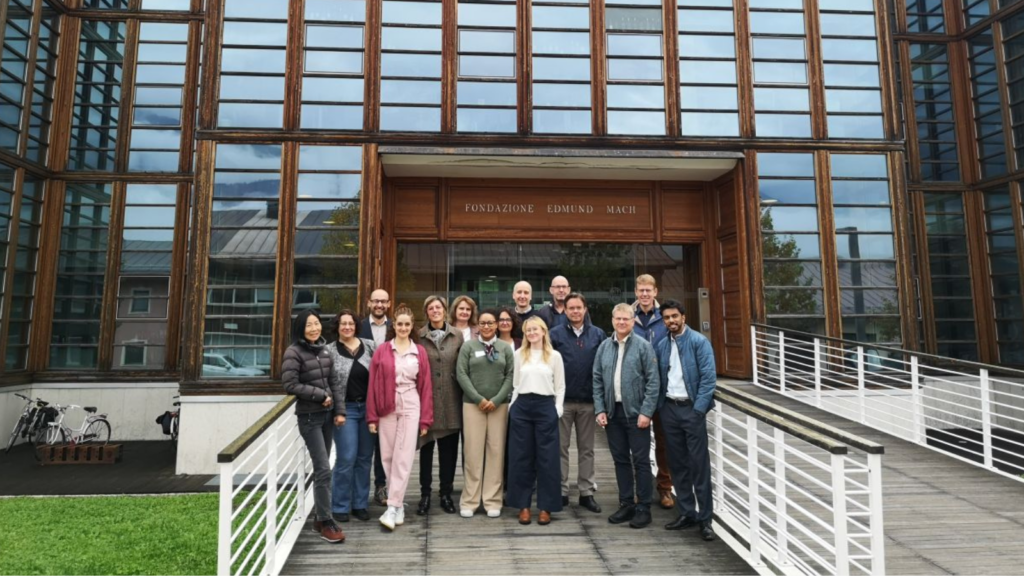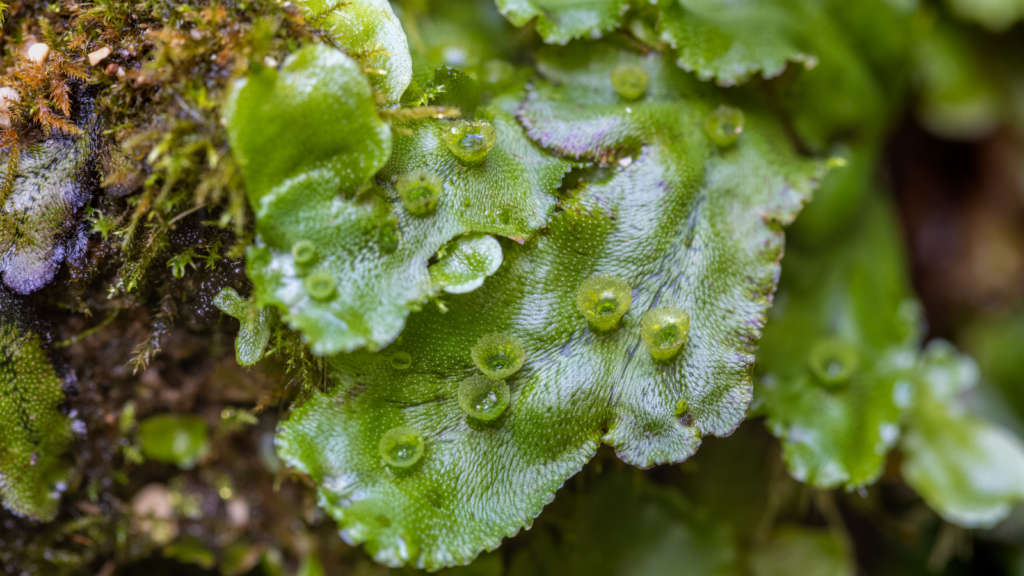Bryophytes and Climate Change
When we think about the effects of climate change, our minds jump to the extremes: forest fires, droughts, rising oceans. But what about bryophytes, those tiny, often-overlooked plants? How are they responding to rising temperatures and extreme weather? And, despite their size, can they help us mitigate the effects of climate change?
With global distribution, bryophytes are one of the few species that can be compared around the world (Slate et al. 2024). This means they are also key indicators of climate change and air quality. By looking at historical data on their presence and morphology, we can see how much a specific area is being impacted. For example, we see bryophyte communities in the arctic tundra–an area warming faster than everywhere else–shifting rapidly, which is having catastrophic effects on the communities that rely on their soil formation, symbiosis with nitrogen fixing bacteria, and water retention (Lett et al. 2022)

Images by Pranav Raj Thirumalamal Kalarickal
Why are bryophytes important in climate discussions?
Because bryophytes do not have true roots or a vascular system, one could argue that they have a different sort of relationship to their environment. They cannot grow very tall; thus, they can grow on rocks, wood, and other surfaces vascular plants cannot. With their ability to absorb 2-30 times their dry weight in water, they have a remarkable ability to control the release of water and nutrients into their surroundings, providing stability to their ecosystem (Slate et al. 2024). This is important in primary succession, allowing soil to form (Lett et al. 2022).
Bryophytes also have a remarkable ability to store carbon. Ground with bryophyte cover is estimated to absorb over 6 billion tons more carbon yearly, proving vital for carbon cycling (Eldridge et al 2023). This is especially prevalent in peat bogs, which are estimated to sequester nearly 0.4 gigatons of carbon yearly (Beaulne et al. 2021). The superstar of peat bogs are sphagnum mosses, which contribute to peat formation that is estimated to contain over 44% of global soil carbon (Pacheco-Cancino et al. 2024).
In order to mitigate the effects of climate change, it is vital that we consider all aspects of the biosphere. Bryophytes, albeit tiny, are mighty important!
Why are bryophytes at risk?
1. Low temperature optima for photosynthesis: Most bryophytes are the most efficient at moderate temperatures, so the increased global temperatures are impacting how much bryophytes can grow. This is exacerbated by desertification, as many bryophytes rely on shade from other plants.
2. Bryophytes rely on water for reproduction: Although bryophytes are found in nearly every terrestrial ecosystem, including deserts, water is necessary for the male gametes to swim to the female gametes, making the spores that bryophytes release.
3. Lack of research Research in bryology is underfunded, so much about bryophyte reproduction and genetic diversity is unknown. This is problematic for conservation, because we must understand the systems involved with bryology in order to help.
Bryophytes are tiny, but their role in the fight against climate change is significant. As critical indicators of environmental health, they offer insights into the impacts of warming temperatures and shifting ecosystems. Their ability to regulate water cycles, support soil formation, and sequester carbon makes them essential allies in our efforts to mitigate climate change.
Despite their importance, bryophytes often remain overlooked, both in research and conservation efforts. By shining a light on these resilient plants, we can better understand their potential and take steps to protect them. After all, when it comes to tackling the climate crisis, even the smallest contributors can make a big difference.
Author: Eliza Hayse
References
Beaulne, J., M. Garneau, G. Magnan, and É. Boucher. 2021. Peat deposits store more carbon than trees in forested peatlands of the boreal biome. Scientific Reports 11: 2657.
Eldridge, D. J., E. Guirado, P. B. Reich, R. Ochoa-Hueso, M. Berdugo, T. Sáez-Sandino, J. L. Blanco-Pastor, et al. 2023. The global contribution of soil mosses to ecosystem services. Nature Geoscience 16: 430–438.
Lett, S., I. S. Jónsdóttir, A. Becker-Scarpitta, C. T. Christiansen, H. During, F. Ekelund, G. H. R. Henry, et al. 2022. Can bryophyte groups increase functional resolution in tundra ecosystems? Arctic Science 8: 609–637.
Pacheco-Cancino, P. A., R. F. Carrillo-López, A. Sepulveda-Jauregui, and M. A. Somos-Valenzuela. 2024. Sphagnum mosses, the impact of disturbances and anthropogenic management actions on their ecological role in CO2 fluxes generated in peatland ecosystems. Global Change Biology 30: e16972.
Slate, M. L., A. Antoninka, L. Bailey, M. B. Berdugo, D. A. Callaghan, M. Cárdenas, M. W. Chmielewski, et al. 2024. Impact of changing climate on bryophyte contributions to terrestrial water, carbon, and nitrogen cycles. New Phytologist 242: 2411–2429.

